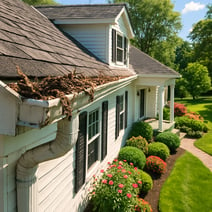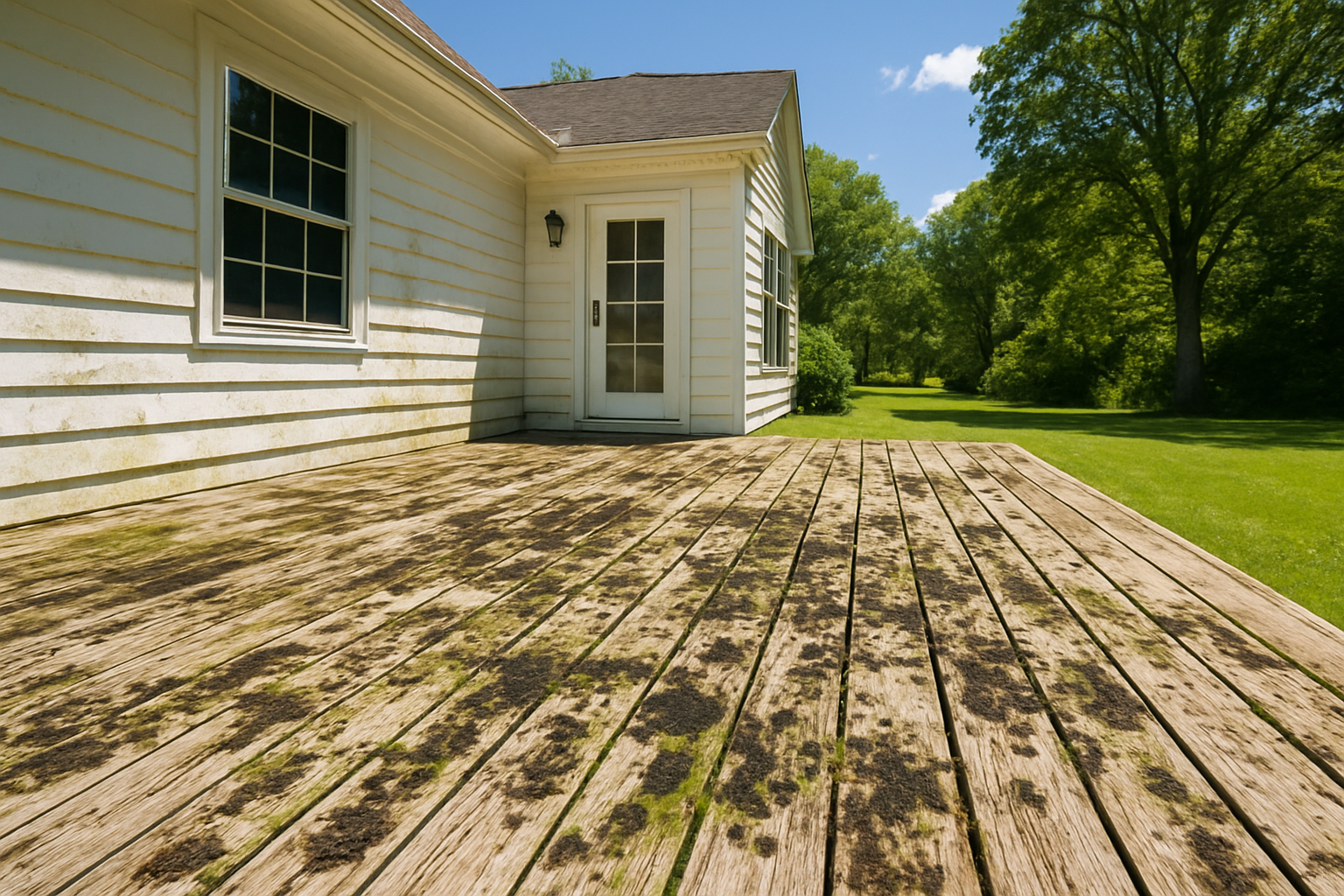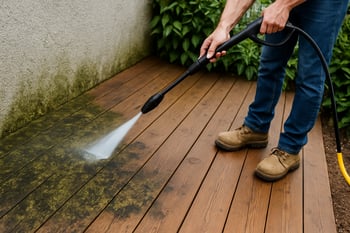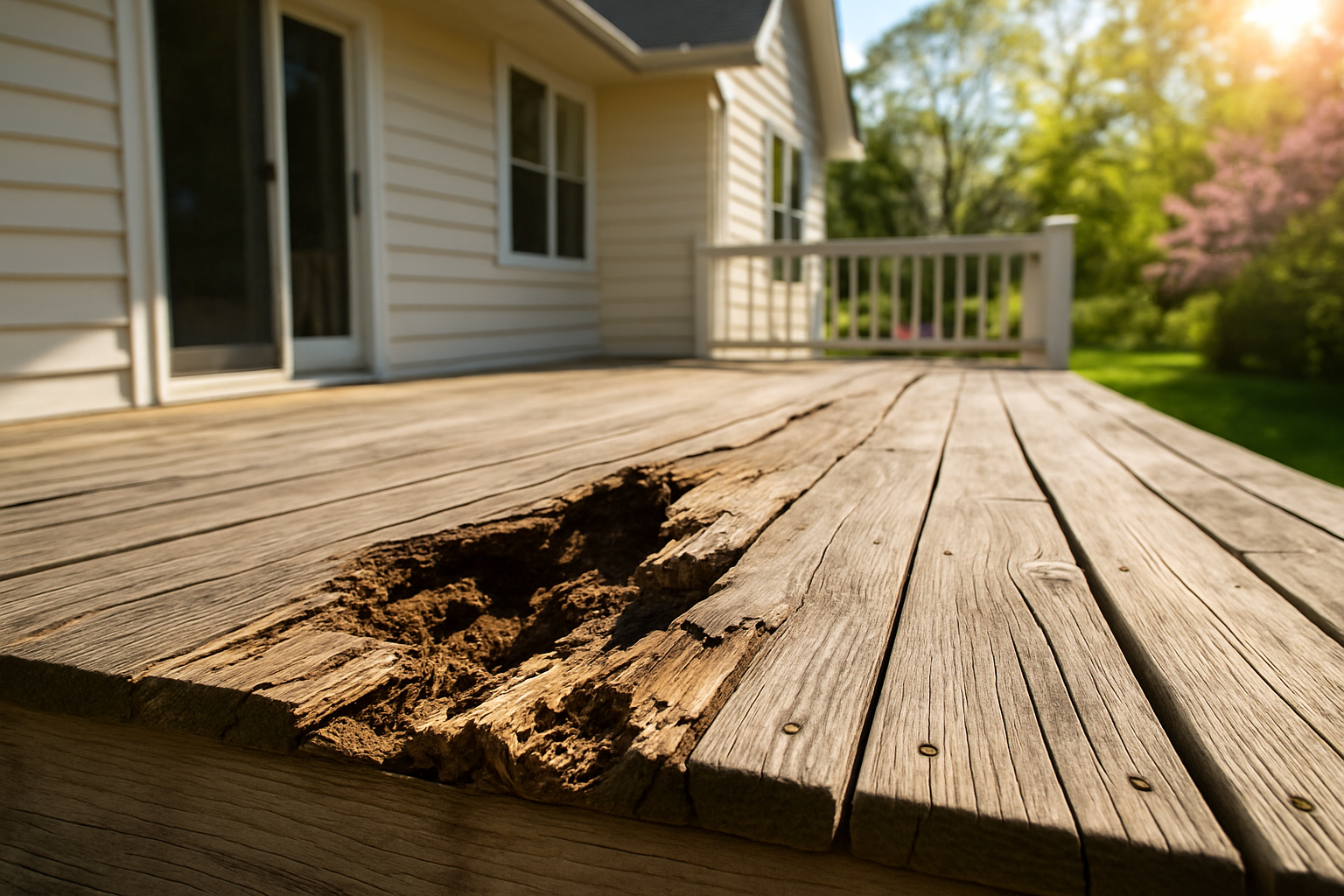 Why Deck Mold Prevention Matters for Minnesota Homeowners
Why Deck Mold Prevention Matters for Minnesota Homeowners
Minnesota’s four-season climate gives us stunning summers, crisp autumns, and long, snow-filled winters. But that same moisture-heavy environment also creates the perfect conditions for deck mold and mildew.
From humid July afternoons to damp spring thaw, your deck is exposed to constant temperature swings, snow melt, and rainfall. If not maintained, wood or composite surfaces can absorb moisture, inviting mold, mildew, and decay.
Deck mold prevention goes beyond just keeping things looking clean. Mold buildup can make decks dangerously slippery, weaken the structure, and even void your manufacturer’s warranty if not addressed.
At Home Visions Carpentry, we’ve helped countless Minnesota homeowners protect their outdoor investments through expert deck construction and ongoing maintenance plans. Below, we share what causes deck mold, how to prevent it, and the best treatment solutions for long-term protection.
Understanding Deck Mold Prevention and Why It’s So Important
Before diving into treatment, let’s talk about what you’re up against.
Mold and mildew thrive in damp, shaded areas, especially where airflow is limited. Minnesota decks surrounded by trees or shaded by north-facing walls often see faster growth.
Common signs of mold and mildew include:
-
Dark or greenish spots along deck boards or railings
-
Musty odor after rain or snowmelt
-
Slippery film underfoot, especially in shaded sections
-
Visible wood softening or discoloration
If you spot any of these, it’s time to act. The longer the mold lingers, the deeper it can penetrate the wood fibers or settle into composite textures. Preventing it early keeps your deck strong, attractive, and safe for your family.
 Top Deck Mold Prevention Tips for Minnesota Homes
Top Deck Mold Prevention Tips for Minnesota Homes
Preventing mold starts with proactive care. These strategies are tailored for Minnesota’s weather cycle cold winters, humid summers, and plenty of precipitation in between.
1. Choose Mold-Resistant Deck Materials
If you’re building a new deck or replacing your old deck, opt for composite decking made from capped polymers or PVC.
Top brands like Trex Transcend or TimberTech AZEK offer high resistance to mold and mildew. Their protective caps prevent moisture from seeping into the boards.
For natural wood decks, use pressure-treated lumber or cedar, and always apply a water-repelling sealant rated for Minnesota’s freeze-thaw cycles.
📎Read more about mold-resistant decking options at The Spruce.
2. Ensure Proper Drainage and Airflow
Standing water is your deck’s worst enemy.
Make sure your deck boards are properly spaced (typically ⅛”–¼” apart) to allow rain and snowmelt to drain off.
Underneath, there should be at least 18 inches of clearance for airflow between the ground and deck frame. This prevents trapped humidity.
Adding lattice panels or skirting with vent openings helps improve air circulation while keeping the look clean.
🧠 Pro Tip: Check Minnesota building codes for deck construction spacing and drainage. You can find current guidelines via the Minnesota Department of Labor and Industry.
3. Regularly Clean and Rinse Your Deck
A regular cleaning routine is the easiest way to prevent deck mold.
-
Spring: Use a mild detergent or oxygen bleach to remove winter grime.
-
Summer: Rinse with a garden hose monthly to remove pollen and organic debris.
-
Fall: Clear leaves promptly to avoid moisture retention.
Avoid using harsh chlorine bleach—it can strip wood of its natural oils and damage deck fasteners. Instead, choose eco-friendly cleaners designed for composite or wood decks, such as Defy Deck Cleaner or Simple Green Outdoor Cleaner.
4. Apply a Quality Sealant or Stain
After a thorough cleaning, apply a high-quality deck sealant or semi-transparent stain to block water absorption.
In Minnesota, look for products labeled “cold-weather” or “freeze-thaw resistant.”
Reapply every two to three years, depending on sun exposure and foot traffic.
🌡️ Local Tip: Avoid sealing your deck in temps below 50°F or during humid weather. Spring and early fall are ideal sealing seasons in Minnesota.
5. Trim Surrounding Vegetation
Overhanging trees and nearby shrubs can trap moisture and block sunlight—the perfect environment for mildew growth. Trim branches to allow better airflow and sunshine, which helps your deck stay dry faster after rain.
6. Keep Gutters and Downspouts Clean 
If your deck sits beneath your home’s eaves, ensure your gutters and downspouts divert water away from the deck’s surface.
Overflowing gutters often drip directly onto deck boards, creating chronic moisture zones.
7. Use Outdoor Fans for Air Circulation
If your deck is covered or enclosed, adding an outdoor-rated ceiling fan can make a big difference.
Fans help speed up evaporation after storms and keep air moving—especially helpful during Minnesota’s humid July and August months.

Treating Mold and Mildew Once It Appears
Even with the best prevention, mold can still sneak up on you—especially after a wet spring thaw or late-fall storm. Here’s how to safely and effectively treat it.
1. Scrub with a Mold-Fighting Cleaner
For light mildew, use a mixture of warm water and dish soap or a deck-safe cleaner. Apply with a soft-bristle brush and rinse thoroughly.
Avoid wire brushes; they can scratch surfaces and damage protective coatings.
2. Try an Oxygen-Based Cleaner for Stubborn Growth
If mold persists, use an oxygen bleach solution (sodium percarbonate-based) rather than chlorine bleach. It penetrates deeper into wood fibers without bleaching or harming plants nearby.
Let it sit for 10–15 minutes before scrubbing and rinsing with a hose.
3. Pressure Washing: Use with Care 
A light pressure wash (under 1,200 PSI) can remove mold stains, but be gentle. Always follow the grain of the wood and keep the nozzle at least 10–12 inches away from the surface.
Too much pressure can gouge wood and push water deeper into the material.
4. Apply a Mildew-Resistant Finish
Once the deck is clean and fully dry, apply a mildew-resistant finish. These products contain fungicides that help repel future mold growth.
Look for finishes approved for Minnesota’s wet-dry cycles and UV exposure.
Deck Mold Prevention for Every Season
Because Minnesota weather changes drastically throughout the year, ongoing care is key.
Spring:
Inspect for water damage, clean, and reseal if needed.
Summer:
Rinse and clear debris regularly, check fan airflow, and keep nearby trees trimmed.
Fall:
Remove leaves promptly, clean gutters, and store furniture to avoid trapped moisture.
Winter:
Avoid using salt or harsh ice melt products—they can stain or corrode deck materials. Instead, use pet-safe, plant-safe ice melt products and a plastic shovel.
By incorporating these habits, you’ll not only prevent mold but also extend the life of your deck by many years.
When to Call a Professional

Sometimes mold damage runs deeper than surface staining. If you notice soft boards, deep rot, or warping, it may be time for a professional assessment.
Our team at Home Visions Carpentry can determine whether boards can be restored or need replacement.
We also evaluate your deck’s substructure to ensure it meets Minnesota’s deck safety and building code requirements, particularly if moisture has affected support posts or joists.
Why Choose Home Visions Carpentry for Deck Resurfacing and Replacement
Even with proper care and routine maintenance, time and Minnesota weather eventually wear down any deck. When cleaning and sealing are no longer enough, it may be time to consider a deck resurfacing or full replacement.
At Home Visions Carpentry, we understand how the regional climate affects every board, beam, and fastener. Our team specializes in rebuilding outdoor spaces that can withstand Minnesota’s extremes. Whether your deck needs a cosmetic facelift or a complete rebuild, we’ll guide you through the process from inspection to installation.
Our deck resurfacing and replacement services include:
-
Comprehensive structural inspection to evaluate framing, joists, and footings for safety and stability
-
Professional resurfacing using long-lasting composite materials or sustainably sourced cedar for beauty and resilience
-
Complete deck replacement when framing or supports have deteriorated beyond repair
-
Custom design updates, including new railings, fascia, or stair systems for a fresh, modern look
-
Protective finishes and coatings that withstand moisture, UV exposure, and Minnesota’s freeze-thaw cycles
-
Improved drainage and airflow to prevent future moisture-related issues
From restoring aging decks to building brand-new outdoor living spaces, our focus is on craftsmanship, quality materials, and year-round durability. When you’re ready to transform your deck into a beautiful, low-maintenance retreat that lasts, Home Visions Carpentry is your trusted local partner.